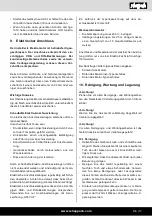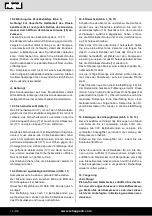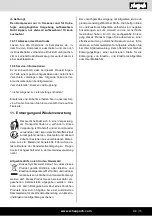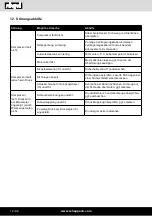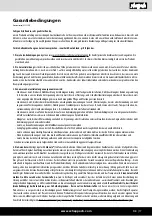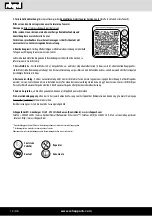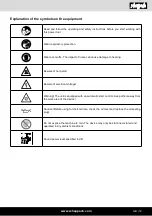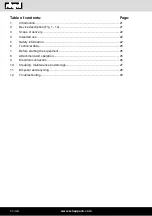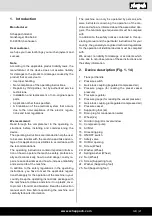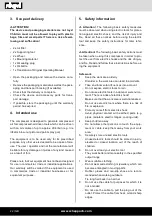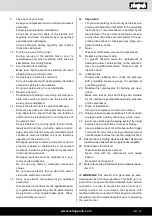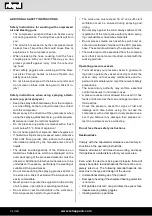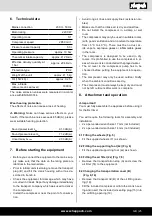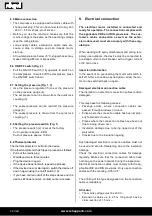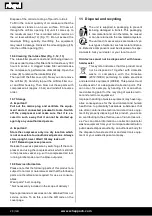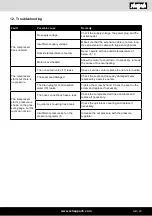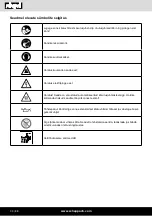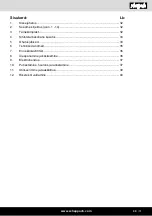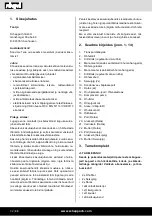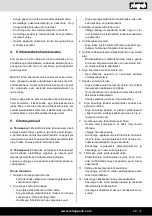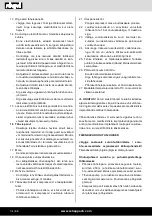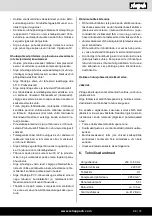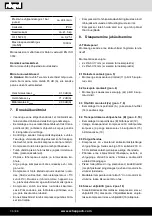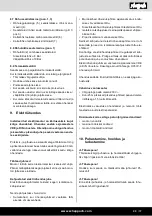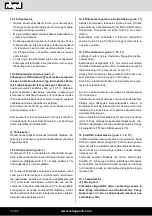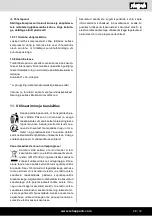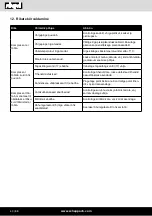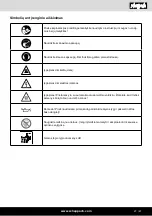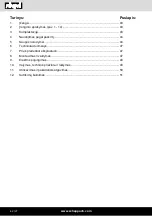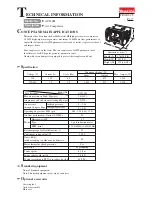
www.scheppach.com
GB | 27
Then close the drain screw again (turn it clockwise).
Check the pressure vessel for signs of rust and dam-
age each time before using. Do not use the compres-
sor with a damaged or rusty pressure vessel. If you
discover any damage, then please contact the custom-
er service workshop.
m
Important!
The condensed water from the pressure vessel will
contain residual oil. Dispose of the condensed water
in an environmentally compatible manner at a suitable
collection point.
10.3 Safety valve (Fig. 3)
The safety valve (17) has been set for the highest per-
mitted pressure of the pressure vessel. It is not permit-
ted to adjust the safety valve or remove the connection
lock (17.2) between the exhaust nut (17.1) and its cap
(17.3).
Actuate the safety valve every 30 operating hours but
at least 3 times a year, to ensure that it works when
required.
Turn the perforated exhaust nut (17.1) counterclock-
wise to open it and use your hands to pull the valve rod
outwards over the perforated exhaust nut (17.1) to open
the safety valve outlet. Now, the valve audibly releases
air. Then, tighten the exhaust nut clockwise again.
10.4 Checking the oil level at regular intervals
(Fig. 11)
Place the compressor on a level and straight surface.
The oil level must be between the MAX and MIN marks
on the oil level window (12).
Oil change: we recommend SAE 15W 40 or equiva-
lent.
The original oil filling must be changed after 10 hours
in operation; thereafter the oil must be drained and re-
placed with new oil after every 50 hours in operation.
10.5 Changing the oil (Fig. 1, 10, 11)
Switch off the engine and pull the mains plug out of the
socket. Remove the oil sealing plug (15). After releas-
ing any air pressure you can unscrew the oil drain plug
(12) from the compressor pump (13).
To prevent the oil from running out in an uncontrolled
manner, hold a small metal chute under the opening
and collect the oil in a vessel. If the oil does not drain
out completely, we recommend tilting the compressor
slightly. When the oil has drained out, re-fit the oil drain
plug (12).
Connections and repairs of electrical equipment may
only be carried out by an electrician.
Please provide the following information in the event
of any enquiries:
• Type of current for the motor
• Machine data - type plate
• Motor data - type plate
10. Cleaning, maintenance and storage
m
Important!
Pull out the power plug before doing any cleaning and
maintenance work on the equipment. Risk of injury
from electric shock!
m
Important!
Wait until the equipment has cooled down completely!
Risk of burns!
m
Important!
Always depressurize the equipment before carrying out
any cleaning and maintenance work! Risk of injury!
10.1 Cleaning
• Keep the equipment free of dirt and dust as far as
possible. Wipe the equipment with a clean cloth or
blow it down with compressed air at low pressure.
• We recommend that you clean the equipment im-
mediately after you use it.
• Clean the equipment regularly with a damp cloth
and some soft soap. Do not use cleaning agents
or solvents; these may be aggressive to the plastic
parts in the equipment. Ensure that no water can
get into the interior of the equipment.
• You must disconnect the hose and any spraying
tools from the compressor before cleaning. Do not
clean the compressor with water, solvents or the
like.
10.2 Maintenance work on the pressure vessel
(Fig. 1)
Important! To ensure a long service life of the
pressure vessel (8), drain off the condensed wa-
ter by opening the drain valve (10) each time after
using.
Release the vessel pressure first (see 10.7.1). Open
the drain screw by turning counter-clockwise (looking
at the screw from the bottom of the compressor) so
that all the condensed water can run out of the pres-
sure vessel.
Summary of Contents for 5906102901
Page 4: ...www scheppach com 4 15 19 m i n m a x 12 10 11 C D E G C D E F 12 13...
Page 96: ...www scheppach com 96...
Page 97: ...www scheppach com 97...
Page 98: ...www scheppach com 98...

